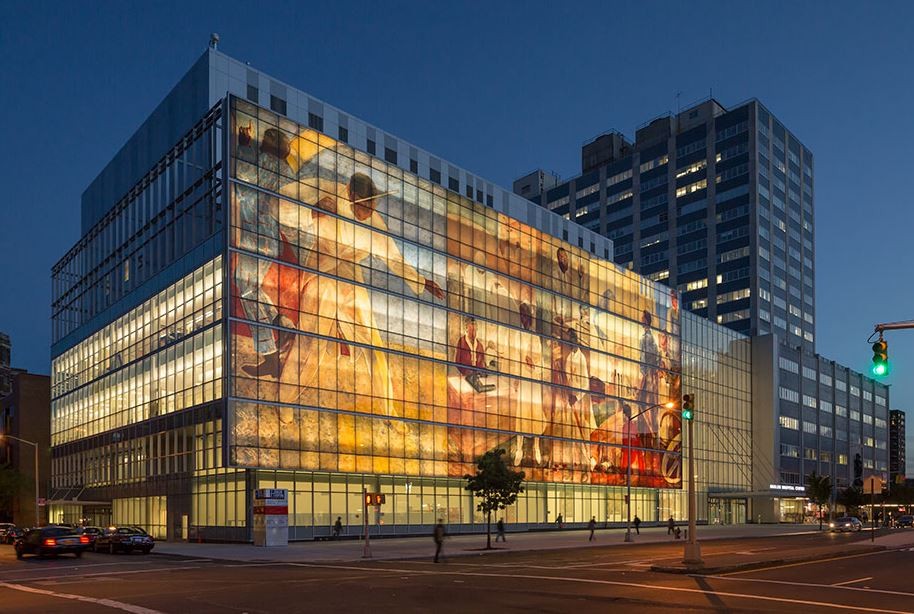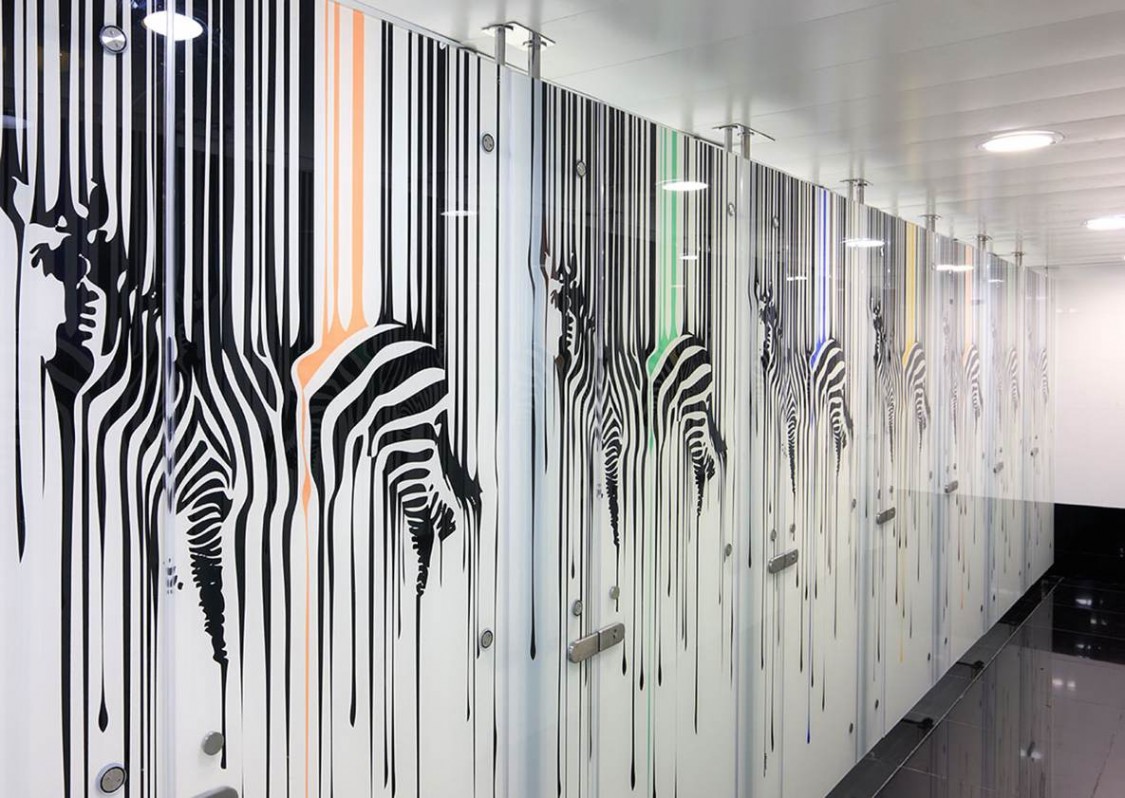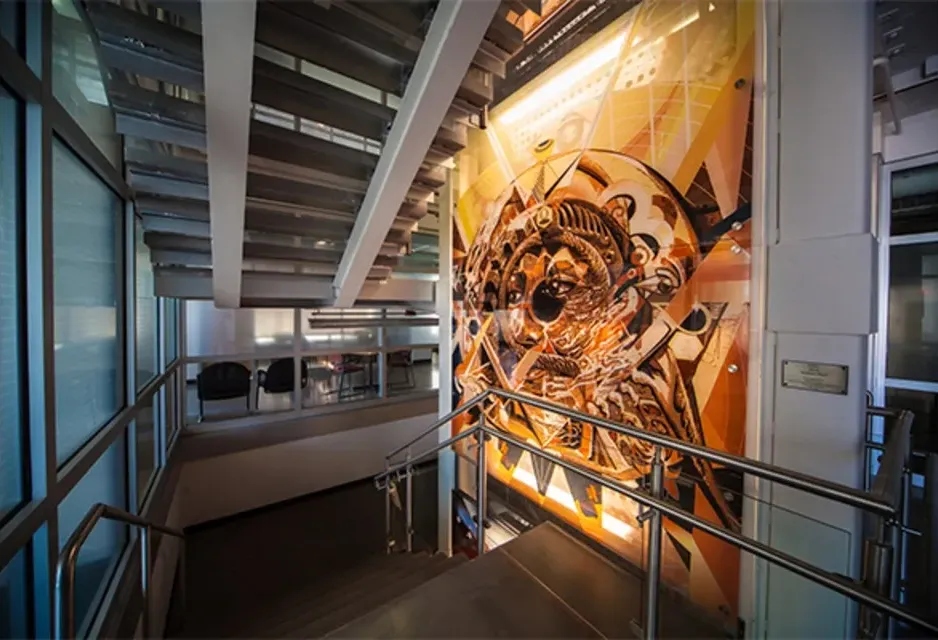Designing Direct Glass Digital Printing - Unleashing Artistic Possibilities On Glass
Designing direct glass digital printing is an innovative and advanced technique that allows for the direct transfer of intricate designs, patterns, and images onto glass surfaces. This groundbreaking technology has transformed the way glass is used in architecture, interior design, and various functional applications, offering a seamless fusion of aesthetics and functionality.
Author:George EvansAug 11, 202337.8K Shares631.3K Views

Designing direct glass digital printingis an innovative and advanced technique that allows for the direct transfer of intricate designs, patterns, and images onto glass surfaces. This groundbreaking technology has transformed the way glass is used in architecture, interior design, and various functional applications, offering a seamless fusion of aesthetics and functionality.
Architects and designers are continuously striving to develop distinctive and visually appealing external glazing that stands out from the crowd. While this may lead to the specification of patterned or full color glass, there are alternative solutions available that provide more flexibility, both in terms of aesthetic design and technical performance. Direct-to-glass digital printing is at the forefront of the industry.
When it comes to producing one-of-a-kind trademark designs, architects and interior designers have limitless options thanks to direct-to-glass digital ceramic printing. From enhancing the beauty of architectural facades to creating stunning glass installations, designing direct glass digital printing has opened up a world of artistic possibilities and practical applications.
Designing Direct Glass Digital Printing Process
Direct Digital Glass Printing entails directly printing a digital art file onto the glass. The art file is printed onto the inner side of the glass using unique UV ink and technology, which is then protected by a double coating to ensure the picture does not fade.
The process of designing direct glass digital printing is a sophisticated and precise technique that transforms digital designs into stunning glass masterpieces. This innovative process seamlessly combines artistry and technology, enabling the direct transfer of intricate and vibrant designs onto glass surfaces. Let's delve into the various stages of this remarkable process:
Conceptualization And Digital Design
The process begins with conceptualization and the creation of a digital design using specialized computer software. This is a crucial step where designers, artists, or clients bring their creative visions to life on the digital canvas. The digital design can encompass a wide range of elements, including high-resolution photographs, intricate patterns, colorful illustrations, or even branding elements.
Preparing The Artwork For Printing
Once the digital design is finalized, it undergoes a meticulous preparation process to ensure optimal results during printing. This involves adjusting colors, resolutions, and scaling to match the intended glass surface dimensions. Careful attention is given to maintaining the design's clarity, vibrancy, and details, ensuring that the artwork translates seamlessly onto the glass medium.
Direct Glass Digital Printing
With the digital design ready, it is fed into the direct glass digital printing system, which utilizes advanced inkjet technology to apply the artwork directly onto the glass surface. This printing process involves the precise application of ink droplets onto the glass, adhering to the exact specifications of the digital design.
High-Definition Printing
The direct glass digital printing system employs high-definition printing capabilities, ensuring exceptional clarity and resolution of the printed design. The inkjet technology accurately reproduces the colors, gradients, and intricate details, resulting in a visually striking and true-to-life representation of the original digital artwork.
UV Curing And Bonding
After the printing is complete, the glass with the printed design undergoes a UV curing process. This involves exposing the printed glass to ultraviolet light, which cures and bonds the ink to the glass surface. The UV curing process ensures the longevity and durability of the printed design, making it resistant to fading, scratching, and wear over time.
Quality Control And Finishing
Quality control measures are implemented throughout the printing process to ensure that the final glass masterpiece meets the highest standards of precision and quality. Once the UV curing is complete, the glass undergoes finishing touches, including cleaning and inspection, to ensure a flawless presentation.
Integration Into The Final Application
The printed glass is then integrated into the final application, depending on the specific project's requirements. For architectural facades, the printed glass panels are carefully installed to create a visually striking exterior. In interior decor, the printed glass may become decorative partitions, wall panels, or other design elements that enhance the space's aesthetics.
Showcasing Artistic Expression
Designing direct glass digital printing offers unparalleled freedom of artistic expression. It allows designers, artists, and clients to explore various styles, colors, and themes, enabling unique and customized glass creations. Whether it's transforming a building's facade into a captivating art installation or elevating the ambiance of an interior space with intricate designs, direct glass digital printing transforms glass into a canvas for creative expression.
Versatility Of Applications
Designing direct glass digital printing opens up a world of possibilities with its remarkable versatility, offering transformative applications in architecture and interior decor. This cutting-edge technology allows designers and architects to elevate the visual impact of glass surfaces, infusing spaces with creativity, style, and functionality.
Let's explore the diverse range of applications that designing direct glass digital printing offers, from creating captivating architectural facades to enhancing interior spaces with artistic expression.
Architectural Facades
Architectural facades serve as the first impression of a building, and designing direct glass digital printing offers an unparalleled opportunity to make a bold statement. The technology allows for the creation of visually striking and intricate designs that can be applied to glass curtain walls or glass cladding systems.
These printed facades can feature nature-inspired patterns, abstract compositions, or even historical motifs that reflect the building's identity and purpose. The result is an iconic and captivating exterior that stands out in the urban landscape.
Custom-Made Glass Partitions
Interior spaces benefit from the transformative potential of direct glass digital printing through custom-made glass partitions. These partitions not only serve a practical purpose in dividing spaces but also become elegant design elements that elevate the overall ambiance.
The printed glass partitions can feature subtle patterns for privacy, vibrant illustrations to create focal points, or even brand elements that reinforce the identity of commercial spaces.
Glass Doors And Panels
Incorporating direct glass digital printing on glass doors and panels infuses functional elements with artistic expression. Entry doors, office partitions, and glass room dividers can be adorned with intricate designs, adding a touch of sophistication and visual interest. For commercial spaces, such as hotels and retail establishments, printed glass doors can feature branding elements or captivating imagery, welcoming guests with a memorable first impression.
Glass Art Installations
Designing direct glass digital printing transcends functionality and ventures into the realm of art installations. Glass sculptures, murals, and feature walls become immersive experiences for viewers, creating stunning focal points in public spaces, galleries, and cultural institutions. Artists can push the boundaries of creativity, utilizing the seamless integration of digital designs onto glass to convey complex narratives and emotions through their work.
Wayfinding And Environmental Graphics
Direct glass digital printing extends its applications to practical wayfinding and environmental graphics. Printed glass surfaces can serve as intuitive navigation aids in public spaces, guiding visitors with clear and aesthetically pleasing signage. Environmental graphics, such as informative displays or educational illustrations, can be beautifully integrated into glass surfaces, enriching the spatial experience.
Retail Spaces And Window Displays
Retail spaces benefit from the versatility of direct glass digital printing to create captivating window displays and branding elements. Printed glass surfaces can feature seasonal designs, product promotions, or artistic arrangements, inviting passersby into the store. The use of digital designs on glass adds a sense of dynamism and freshness to retail spaces, enhancing the overall shopping experience.
Privacy Films And Safety Markings
Beyond aesthetics, direct glass digital printing serves practical purposes in privacy films and safety markings. These printed films can feature patterns, gradients, or logos that enhance the privacy of glass-walled spaces while maintaining a sense of openness. Safety markings, such as stairwell designs and exit signs, contribute to building safety and wayfinding in emergency situations.
Advantages Of Direct Glass Digital Printing
Designing direct glass digital printing offers a plethora of advantages that have revolutionized the use of glass in architectural and design applications. This cutting-edge technology seamlessly combines artistic expression with functionality, opening up new possibilities for designers, architects, and artists. Let's explore the key advantages of direct glass digital printing:
Complete Customization
One of the most significant advantages of direct glass digital printing is the ability to achieve complete customization. Designers and clients have the freedom to create unique and intricate designs that reflect their artistic vision. Whether it's abstract patterns, realistic imagery, or branding elements, direct glass digital printing allows for endless possibilities, resulting in truly one-of-a-kind glass masterpieces.
Durability And Longevity
Direct glass digital printing creates a durable and long-lasting bond between the printed design and the glass surface. The UV-cured ink adheres seamlessly to the glass, making it highly resistant to fading, scratching, and wear over time. This ensures that the printed design retains its vibrancy and visual appeal for years to come, even in high-traffic or exterior applications.
Preservation Of Transparency And Light Transmission
Despite the application of digital designs, direct glass digital printing preserves the transparency and light transmission properties of glass.
This is particularly essential in architectural applications, where maintaining natural light flow and unobstructed views is crucial. The printed designs seamlessly integrate with the glass surface, allowing light to pass through, creating a visually stunning and functional outcome.
Easy Maintenance
Printed glass surfaces are easy to clean and maintain, requiring simple glass-cleaning practices to keep them looking pristine. The durable UV-cured ink ensures that the design remains intact even with routine cleaning, making it a practical choice for both interior and exterior applications.
Eco-Friendly Solution
Designing direct glass digital printing utilizes eco-friendly inks and materials, making it a sustainable option for architectural and design projects. The technology minimizes waste and environmental impact, aligning with the growing demand for eco-conscious solutions in the design industry.
Future Trends In Glass Digital Printing And Art Installations
The future of designing direct glass digital printing holds exciting possibilities as technology continues to evolve and push the boundaries of artistic expression and functionality.
Advancements in inkjet technology, resolution, and color management are set to redefine the capabilities of this innovative printing technique. Let's explore the potential directions that will shape the future of direct glass digital printing:
Enhanced Printing Precision And Resolution
As technology advances, the precision and resolution of direct glass digital printing are expected to reach new heights. Higher dpi (dots per inch) and finer inkjet nozzles will enable even more intricate and detailed designs on glass surfaces, allowing artists and designers to push the boundaries of creativity.
Integration Of Augmented Reality (AR) And Interactive Elements
The integration of augmented reality (AR) and interactive elements may redefine the way we interact with glass surfaces adorned with digital designs. Imagine glass installations that come to life when viewed through a smartphone or tablet, offering an immersive and interactive experience to viewers.
Smart Glass Integration
Direct glass digital printing could be combined with smart glass technology, where the glass can switch between transparent and opaque states or display dynamic digital content. This opens up new possibilities for dynamic signage, privacy control, and interactive displays.
Three-Dimensional Printing
The future may see the development of three-dimensional direct glass digital printing, enabling the creation of textured and sculptural glass masterpieces. This advancement could expand the applications of designing direct glass digital printing into areas of glass art and installations that were previously unattainable.
Biophilic Designs And Nature-Inspired Patterns
With a growing focus on biophilic design, the future of direct glass digital printing may witness an emergence of nature-inspired patterns and designs. Glass surfaces adorned with botanical motifs, natural textures, and organic patterns could foster a stronger connection between indoor spaces and the natural world.
Multi-Sensory Experiences
Future advancements may also explore the incorporation of multi-sensory experiences into glass designs. This could include glass surfaces with embedded sound or lighting elements, further enhancing the immersive and sensorial impact of direct glass digital printing.
People Also Ask
What Is Designing Direct Glass Digital Printing?
Designing direct glass digital printing is an advanced technology that allows intricate digital designs, patterns, and images to be directly transferred onto glass surfaces. It offers a seamless fusion of art and functionality, transforming glass into a canvas for creativity and expression.
How Does Designing Direct Glass Digital Printing Work?
The process involves creating or selecting a digital design using specialized computer software, which is then fed into a direct glass digital printing system. The printer utilizes advanced inkjet technology to accurately reproduce the colors and details of the digital design on the glass surface.
What Are The Applications Of Designing Direct Glass Digital Printing?
Designing direct glass digital printing finds versatile applications in architecture, interior decor, glass art installations, retail spaces, signage, and functional purposes. It is used to create stunning glass facades, custom-made interior partitions, glass art sculptures, wayfinding signage, and more.
What Are The Advantages Of Designing Direct Glass Digital Printing?
Some of the advantages include complete customization, durability, transparency preservation, easy maintenance, and eco-friendliness. The technology allows for unique designs, and the printed designs on glass surfaces are resistant to fading, scratching, and wear.
What Is The Future Of Direct Glass Digital Printing?
The future of designing direct glass digital printing is promising, with advancements in inkjet technology, resolution, and integration with smart glass. The incorporation of augmented reality and interactive elements may redefine the ways we engage with glass surfaces adorned with digital designs, pushing the boundaries of artistic expression and functionality.
Conclusion
Designing direct glass digital printing has ushered in a new era of artistic expression and functionality in the world of glass applications. It marries the beauty of art with the utility of glass, offering limitless possibilities for architects, interior designers, artists, and creators to leave their mark on the built environment.
From visually stunning facades to captivating interior decor, designing direct glass digital printing continues to push boundaries and redefine the way we perceive and interact with glass surfaces.
As technology continues to evolve, this innovative printing technique promises to shape the future of architectural design, interior decor, and glass art installations, leaving a lasting impression on the world of creativity and innovation.

George Evans
Author
George Anderson, an exceptional architectural designer, envisions and brings to life structures that transcend the realm of imagination. With an unwavering passion for design and an innate eye for detail, George seamlessly blends form and function, creating immersive spaces that inspire awe.
Driven by a deep appreciation for the interplay of space, light, and materials, George's innovative approach redefines the possibilities of architectural design. His visionary compositions leave an indelible mark, evoking a sense of wonder and transforming the built environment.
George Anderson's transformative designs and unwavering dedication continue to shape the architectural landscape, pushing the boundaries of what is possible and inspiring generations to come.
Latest Articles
Popular Articles

